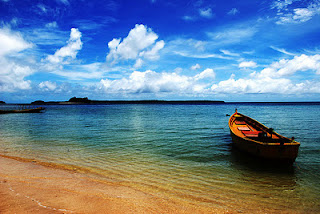I’ve been incredibly slack and not posted all details in
one go. The fear that I maybe forgetting details, prompted me to get busy
with this post.
Ubud is far removed from the drunk bikinis landscape in
Kuta, is known as the designs and disciplines hub, dominated by music classes
and exhibitions. The strong influence of Hinduism is evident in Bali's art,
culture, everyday life and in the two dance performances we saw – a Kecak
dance, which depicts a battle from Ramayana, where Vanara (monkey) helps Lord
Ram fight the evil Ravan. The dance is accompanied by an all-male chorus,
with no musical instrumentation. It was originally a religious
trance-inducing ritual, but was transformed in the 1930s into a dramatic dance
show intended for Western audiences. It's an interesting example of how
Hindu ritual in Bali has become "art." At first, I was a bit
cynical about watching a performance that wasn't "indigenous" and
instead was designed merely to entertain foreign tourists. But with
persuasion gave in, indeed was entertaining. We also saw the Barong dance,
which - like the Kecak dance - tells an ancient mythical tale of the battle
between good and evil. Among other fanciful and dramatic plot points, the
dance involves a spell of dark magic that makes soldiers fighting for the good
want to kill themselves by stabbing themselves, thankfully, the dance also
involves a counter-spell that somehow makes the soldiers resistant to their
self attack. Reminded me of the dance performances we saw in Kerala.
Couldnt help but sense, there's a good dose of theatre
in everyday life. Just walk down the street and you're likely to see a
crowd of impeccably dressed people headed to a religious ceremony, or a
colorful festival associated with a marriage, birth or death. Indeed,
whenever you drive (or in our case, were driven) anywhere in Bali, it's a good
idea to take into account the congestion that is caused by the ritual
processions scheduled for that day.
We also visited a few jewelry shops, batik painters, wood
artisans and a couplea exhibits of artists’ collective of gorgeous paintings of
life in Bali–scenery of rice paddy landscapes, women working in the fields,
beautiful portraits of local Balinese. Wonder why India doesn’t have such a
town where arts and crafts are exhibited to full glory ( Pondicherry perhaps?)
Local Balinese tradition is incomplete without mentioning
the temple visits – our 1st stop was at the sacred, famous sea god temple Tanah
Lot. We were told by our hotel, that erosion had threatened this temple’s
survival; and hence, a comprehensive restoration and stabilization program saw
about a third of the ‘rock’ replaced with artificial rock and concrete –
courtesy of the Japanese Government. Today, it’s a popular site for both
tourists and pilgrims. Tourists are not allowed in. Only certain Balinese
people about to perform the ritual prayer are allowed entry into the temple.
What we did get to see was the wonderful Sun God setting by evening, eclectic
fireworks in the sky. We also the coral life on the shores, hanging around
these corals are black and white snakes which local folklore states to be
protectors of the temple from all evil influences.
The 2nd temple we visited was Pura Ulun Danu, a
Shivling in a water temple located on
the edge of Lake Bratan. Upon arriving here, we were given a sarong to wear
inside (Hindu tradition) before making our way through the gates. The first
thing we noticed is the lake inside the temple with another smaller temple
sitting in the middle of. A little bridge spans the gap for people to walk over
and the view of the surrounding area from here was quite something.
Another temple we went to was a masterpiece of stone
carving standing over 100 feet high and wide. We climbed the stairs and took pictures
from the bottom before proceeding into the temple itself. After dressing the
part once again we ventured into the black rock temple filled with creature
after creature carved into its walls. I felt if Lara Croft could have been
there she would have been shimmying up those statues before you could whistle. And
the main attraction in this place was a massive opening in the mountain wall
where a huge cave opened its mouth to the outside world. As we approached we could
hear the screeching sound of thousands of bats hanging from the ceiling. They
all jostled for position and every now and again one would fly right by
reminding you just how creepy they are. We asked our driver where the cave goes
and he said (in his scary voice), "all the way inside the mountain where
the snakes live". I asked if anybody had ever been inside all the way, to
which he replied "would you want to go in there?" he's got a point I
guess. We placed the customary frangipani flower behind the statues ear and
left the place.
Yes in many ways because of its Hindu affiliation, Bali
reminds one of India. The warmth, the hospitality, the willingness to explain
their culture, makes Balinese people special.
Sub text: Will come back soon and close the Bali trilogy.

























